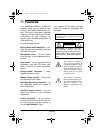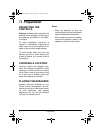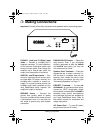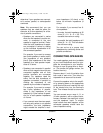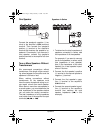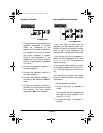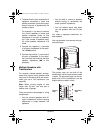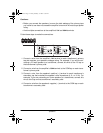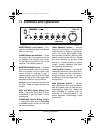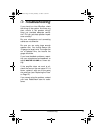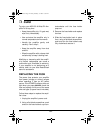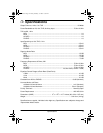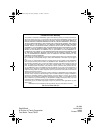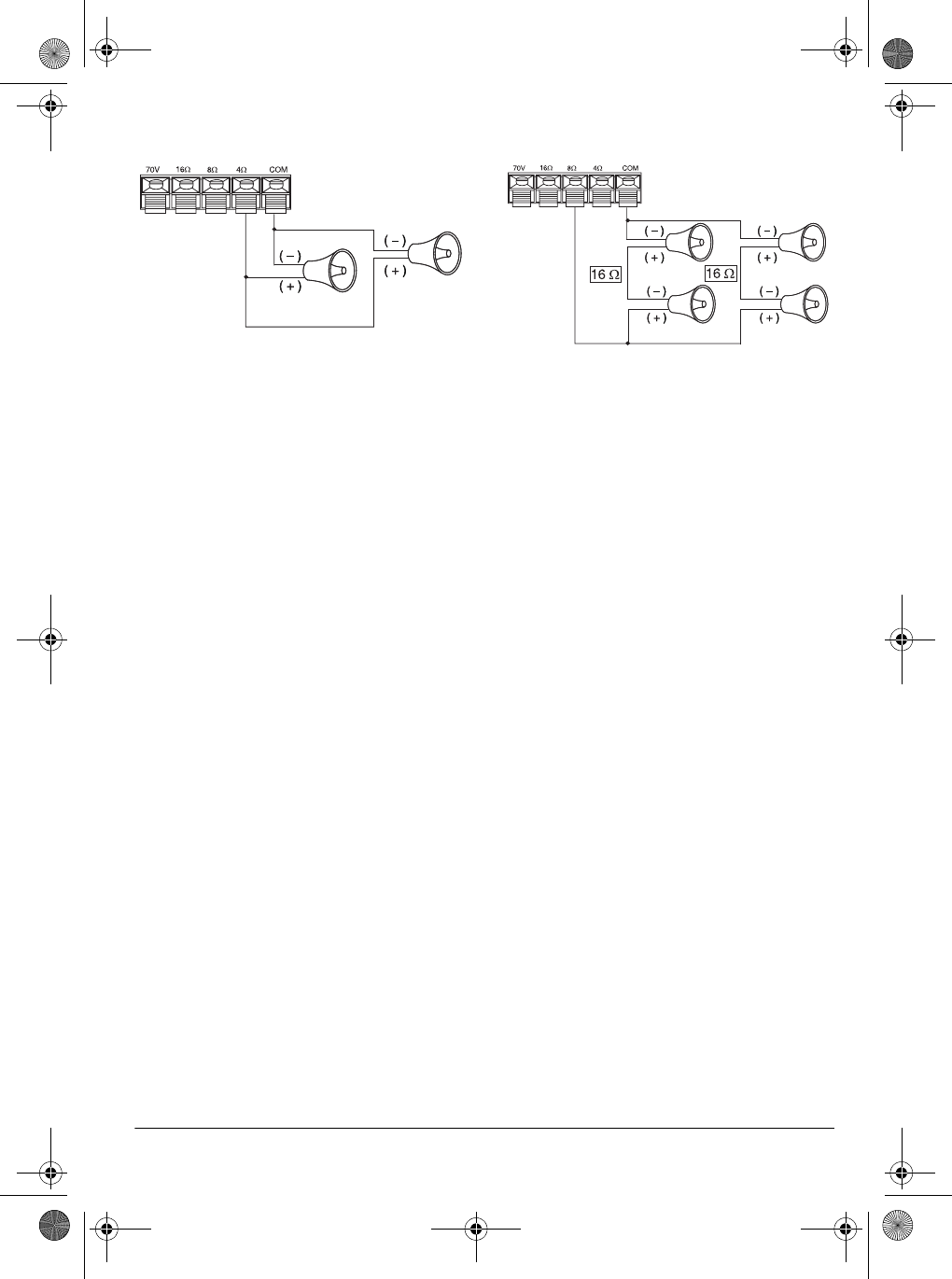
9Speakers
Speakers in Parallel
1. To determine the total impedance of
speakers connected in parallel,
divide the impedance of one
speaker by the number of speakers.
For example, if you want to connect
two 8-ohm speakers in parallel,
divide 8 (the impedance of one
speaker) by 2 (the number of speak-
ers) for a total speaker impedance
of 4 ohms.
2. Connect the speakers’ negative (–)
terminals together.
3. Connect the speakers’ positive (+)
terminals together.
4. Connect the speakers’ negative (–)
terminals to the amplifier’s
COM
ter-
minal.
5. Connect the speakers’ positive (+)
terminals to the amplifier’s terminal
that matches the total speaker
impedance (
4
Ω
ΩΩ
Ω
, in this example).
Series and Parallel Combined
If you must hook up more than two
speakers, you might have to use a com-
bination of series and parallel connec-
tions to get a total impedance that
matches one of the amplifier’s terminals.
If you connect four 8-ohm speakers in
series, the total impedance is 32 ohms
(8 + 8 + 8 + 8 = 32). This exceeds the
maximum rating.
If you connect these speakers in paral-
lel, the total impedance is 2 ohms (8
÷
4
= 2). This falls below the minimum rat-
ing.
You can arrive at a proper total imped-
ance by combining series and parallel
connections.
1. Group speakers into pairs.
2. Connect each pair of speakers in
series.
For example, the total impedance of
each pair of 8-ohm speakers is 16
ohms (8 + 8 = 16).
3. Connect the pairs of speakers in
parallel.
Two 8
Ω
ΩΩ
Ω
Speakers
Four 8
Ω
ΩΩ
Ω
Speakers
32-2002.fm Page 9 Friday, February 11, 2000 11:36 AM





